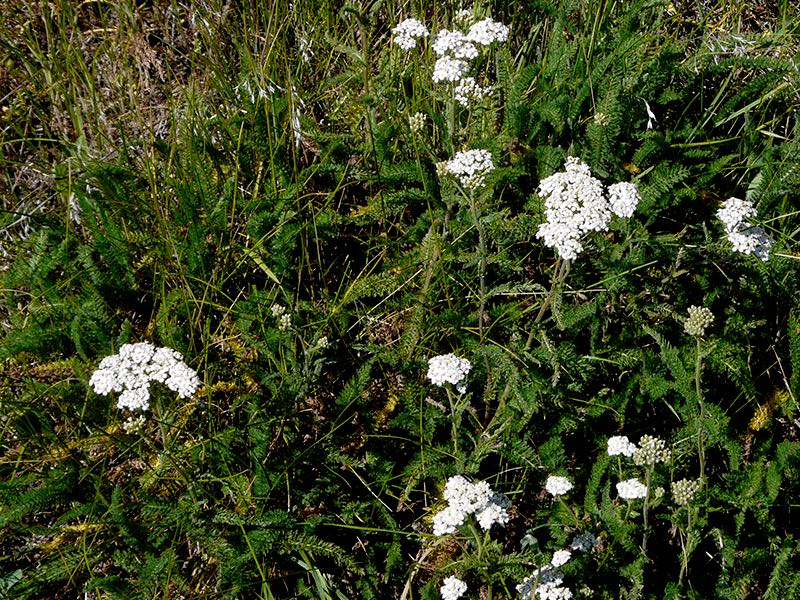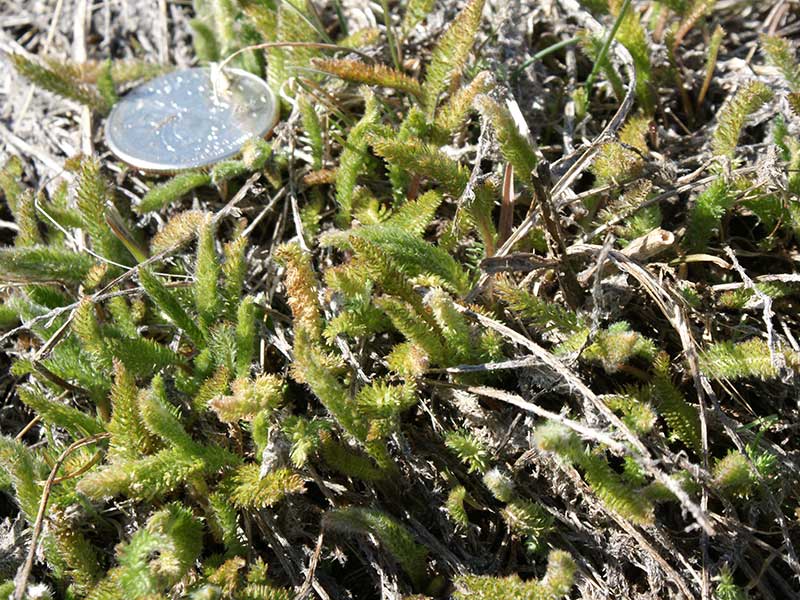Achillea millefolium / yarrow
- common – white umbrella-type flower
- feathery leaves
- clonal; often found in patches
Also known as – common yarrow, plumajillo, gordaldo, nosebleed plant, old man’s pepper, devil’s nettle, sanguinary, milfoil, soldier’s woundwort, thousand-leaf, thousand-seal and many more.
Yarrow is a common white flower in wet and dry areas and in both largely undisturbed (or mildly disturbed) meadows and highly disturbed roadsides. In short, it is adapted to a wide variety of habitats. It is immediately recognizable, even before it flowers, by the frilly leaves. But despite its familiarity to observant hikers, yarrow is a non-native species, and weedy in some areas.
The actual individual flowers are very small, indeed teeny, but the inflorescence/”flower” is large and rounded. Crushed, both the leaves and the flowers have a pleasing fragrance.
In addition to propagating by seed (the flowers are insect pollinated), yarrow spreads via rhizomes, sometimes defining substantial yarrow clones/patches on the landscape, but seldom excluding other species from an area.
The leaves of yarrow contain an array of chemicals that have made the plant useful to both man and beast. The feathery leaves are used by some birds as a nest lining and have anti-parasite properties. The volatile chemicals responsible for the fragrance are an attractant to some beneficial insects, and a repellant to some undesirable ones. You can’t ask for much more than that. They are also a food source for many insects as well as large mammalian herbivores. For humans, yarrow was long used by armies and medics alike to staunch the flow of blood from wounds. Various preparations from leaves have been used for a wide array of maladies, though evidence for their safety and effectiveness today is largely lacking.
| Color | |
|---|---|
| Family | |
| Blossom size | |
| Inflorescence size | |
| Inflorescence type | |
| When? | |
| Where? |





